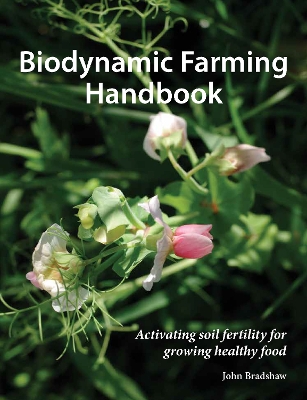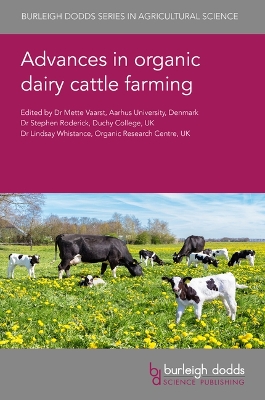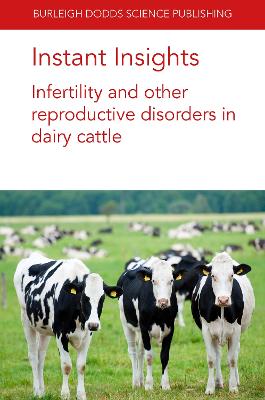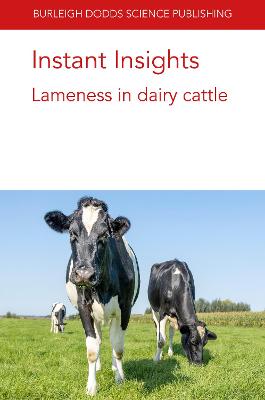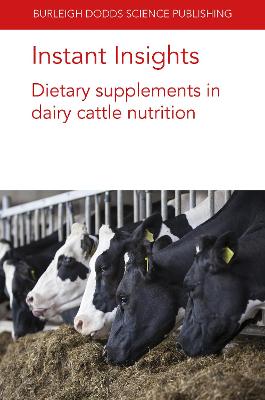Instant Insights: Crops as Livestock Feed
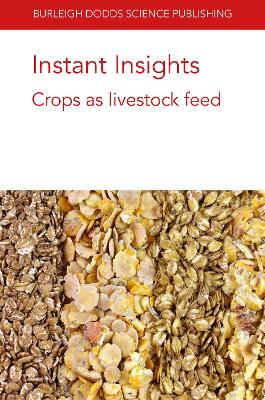 portes grátis
portes grátis
Instant Insights: Crops as Livestock Feed
Muller, Dr A.; Bluemmel, Dr Michael; Yasir Koyun, Dr Osman; Welch, Dr Christina; Davis, Dr Dylan; Hales, Dr Kristin; Callaway, Dr Todd; Seidel, Dr Darren S.; E. Wells, Dr James; Lourenco, Dr Jeferson
Burleigh Dodds Science Publishing Limited
08/2021
126
Mole
Inglês
9781801461719
15 a 20 dias
Chapter 2 - The use and abuse of cereals, legumes and crop residues in rations for dairy cattle: Michael Bluemmel, International Livestock Research Institute (ILRI), Ethiopia; A. Muller, Research Institute of Organic Agriculture (FiBL), and ETH Zuerich Switzerland; C. Schader, Research Institute of Organic Agriculture (FiBL), Switzerland; M. Herrero, Commonwealth Scientifi c and Industrial Research Organization, Australia; and M. R. Garg, National Dairy Development Board (NDDB), India; 1 Introduction2 Current and future levels of animal sourced food (ASF) production3 Dairy ration compositions and current and projected feed demand and supply4 Context specifi city of feed demand and supply5 Ration composition and ceilings to milk productivity6 Optimizing the feed-animal interface: ration balancing in intensive and extensive dairy systems7 Summary8 Where to look for further information9 References
Chapter 3 - Optimising the use of barley as an animal feed: David M. E. Poulsen, Queensland University of Technology, Australia; 1 Introduction2 What is 'feed barley'?3 What do we want from 'feed barley'?4 Optimising feed barley use5 Understanding and optimising feed barley quality for different livestock species6 Future trends and research opportunities7 Conclusion8 Where to look for further information9 References
Chapter 4 - Sorghum as a forage and energy crop: Scott Staggenborg and Hui Shen, Chromatin Inc., USA; 1 Introduction2 Forage and biomass sorghum types3 Forages as animal feed4 Dedicated energy sorghum5 Sweet sorghum6 Summary7 Where to look for further information8 References
Chapter 5 - Nutritional considerations for soybean meal use in poultry diets: Justin Fowler, University of Georgia, USA; 1 Introduction2 Nutritional content of SBM3 Anti-nutritive compounds4 Genetically modified soybeans5 Conclusion and future trends6 Where to look for further information7 References
Chapter 2 - The use and abuse of cereals, legumes and crop residues in rations for dairy cattle: Michael Bluemmel, International Livestock Research Institute (ILRI), Ethiopia; A. Muller, Research Institute of Organic Agriculture (FiBL), and ETH Zuerich Switzerland; C. Schader, Research Institute of Organic Agriculture (FiBL), Switzerland; M. Herrero, Commonwealth Scientifi c and Industrial Research Organization, Australia; and M. R. Garg, National Dairy Development Board (NDDB), India; 1 Introduction2 Current and future levels of animal sourced food (ASF) production3 Dairy ration compositions and current and projected feed demand and supply4 Context specifi city of feed demand and supply5 Ration composition and ceilings to milk productivity6 Optimizing the feed-animal interface: ration balancing in intensive and extensive dairy systems7 Summary8 Where to look for further information9 References
Chapter 3 - Optimising the use of barley as an animal feed: David M. E. Poulsen, Queensland University of Technology, Australia; 1 Introduction2 What is 'feed barley'?3 What do we want from 'feed barley'?4 Optimising feed barley use5 Understanding and optimising feed barley quality for different livestock species6 Future trends and research opportunities7 Conclusion8 Where to look for further information9 References
Chapter 4 - Sorghum as a forage and energy crop: Scott Staggenborg and Hui Shen, Chromatin Inc., USA; 1 Introduction2 Forage and biomass sorghum types3 Forages as animal feed4 Dedicated energy sorghum5 Sweet sorghum6 Summary7 Where to look for further information8 References
Chapter 5 - Nutritional considerations for soybean meal use in poultry diets: Justin Fowler, University of Georgia, USA; 1 Introduction2 Nutritional content of SBM3 Anti-nutritive compounds4 Genetically modified soybeans5 Conclusion and future trends6 Where to look for further information7 References


